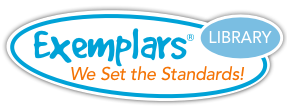How Big Is the Property?
Hectar is in dispute over the amount of property taxes he owes to the state for his farmland. Property taxes on farmland are set by the state government and are determined by the total area of the property, measured in acres. The state is using the aerial photo below to define the total size of the property.
The boundaries for the property can be described using coordinates on a grid overlaid on the aerial photo. If Hectar walks the property boundary, he arrives at coordinates (320, 0), (700, 0), (700, 340), (320, 340), (320, 520), (0, 520), (0, 180), (320, 180), (320, 0). All coordinates are defined in units of feet.
The state has a property tax rate of $326 per acre. An acre is equal to 43,560 square feet. As a result, the town is currently charging Hectar $2,444 in property taxes. Hectar believes he is paying too much in property taxes.
Help Hectar prepare a letter to the state government explaining how much he believes he should be paying the state for his property. Be sure to include all of your mathematical thinking.

More Accessible Version
Hectar is in dispute over the amount of property taxes he owes to the state for his farmland. Property taxes on farmland are set by the state government and are determined by the total area of the property, measured in acres. The state is using the aerial photo below to define the total size of the property.
The boundaries for the property can be described using coordinates on a grid overlaid on the aerial photo. If Hectar walks the property boundary, he arrives at coordinates, (300, 0), (700, 0), (700, 300), (300, 300), (300, 500), (0, 500), (0, 200), (300, 200), (300, 0). All coordinates are defined in units of feet.
The state has a property tax rate of $300 per acre. An acre is equal to 43,560 square feet. As a result, the town is currently charging Hectar $2,500 in property taxes. Hectar believes he is paying too much in property taxes.
Help Hectar prepare a letter to the state government explaining how much he believes he should be paying the state for his property. Be sure to include your mathematical thinking.

More Challenging Version
Hectar is in dispute over the amount of property taxes he owes to the state for his farmland. Property taxes on farmland are set by the state government and are determined by the total area of the property, measured in acres. The state is using the aerial photo below to define the total size of the property.
The boundaries for the property can be described using coordinates on a grid overlaid on the aerial photo. If Hectar walks the property boundary, he arrives at coordinates (320, 0), (700, 0), (700, 340), (320, 520), (0, 520), (0, 180), and back to (320, 0). All coordinates are defined in units of feet.
The state has a property tax rate of $326 per acre. An acre is equal to 43,560 square feet. As a result, the town is currently charging Hectar $2,444 in property taxes. Hectar believes he is paying too much in property taxes.
Help Hectar prepare a letter to the state government explaining how much he believes he should be paying the state for his property. Be sure to include your mathematical thinking.

Plan
Underlying Mathematical Concepts
Possible Problem-Solving Strategies
Formal Mathematical Language and Symbolic Notation
Teacher Notes:
Possible misconceptions that students may encounter:
- Interpret and plot coordinates as (y, x) instead of (x, y).
- Invert the values to convert sq. ft. to acres (i.e. divide 43,560 by 238,000 giving a much smaller answer than desired).
Suggested Materials
Engagement Image:
Teachers may project the image below to launch this task in the classroom, to prepare students, to promote discussion, and to inspire engagement and problem solving.



MP.2
Reason abstractly and quantitatively.